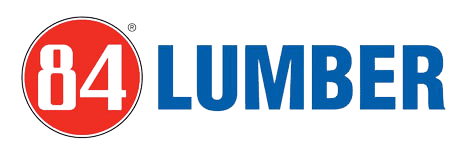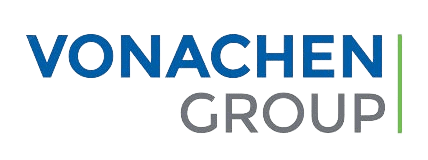I-9 Regulation Overview
The Immigration Reform and Control Act of 1986 mandates employers to verify new hires’ employment eligibility and prohibits hiring unauthorized workers, with penalties for noncompliance and non-discrimination in hiring.


The Immigration Reform and Control Act of 1986 (IRCA) seek to control illegal immigration by eliminating employment opportunity as an incentive for unauthorized persons come to the United States, by prohibiting the hiring or continued employment of aliens whom employers know are unauthorized to work in the United States.
The Immigration Reform and Control Act of 1986 (IRCA) legally mandate that U.S. employers verify the employment eligibility status of newly-hired employees. IRCA made it unlawful for employers to knowingly hire or continue to employ unauthorized workers.
To comply with the law, all U.S. employers must verify the employment eligibility and identity of all employees hired to work in the United States after November 6, 1986 by completing Employment Eligibility Verification forms (Forms I-9) for all employees, including U.S. citizens. Employers who hire or continue to employ individuals knowing that they are not authorized to be employed in the United States may face civil and criminal penalties.
The law also obliges U.S. employers not to discriminate against individuals on the basis of national origin or citizenship, or require different documents from an individual.


Purpose of the I-9 Form
The Form I-9, employment eligibility verification, is used to establish the employment eligibility of persons being considered for employment, and therefore requiring you to hire only those persons who are eligible to legally work in the U.S.
All U.S. employers must complete and retain a Form I-9 for each individual they hire for employment in the United States. This includes citizens and noncitizens. All employees, citizens and noncitizens, hired after November 6, 1986, must complete the Form I-9 at the time of hire, which is the actual beginning of employment.
On the form, the employer must examine the employment eligibility and identity document(s) an employee presents to determine whether the document(s) reasonably appear to be genuine and relate to the individual and record the document information on the Form I-9.


I-9 Form Document Retention
Form I-9 must be kept by the employer either for three years after the date of hire or for one year after employment is terminated, whichever is later.
The form must be available for inspection by authorized U.S. Government officials (e.g., Department of Homeland Security, Department of Labor, Department of Justice) when requested.
Highly Rated Leader in Electronic Form I-9 Compliance
EMP Trust is the recognized leader in employee onboarding software. But don’t take our word for it, just see what our amazing customers have to say.







FAQs - I-9 Regulation Overview
The Immigration Reform and Control Act of 1986 (IRCA) is federal legislation that seeks to control illegal immigration by eliminating employment opportunity as an incentive for unauthorized persons to come to the United States. IRCA accomplishes this by prohibiting the hiring or continued employment of aliens whom employers know are unauthorized to work in the United States. The law legally mandates that U.S. employers verify the employment eligibility status of newly-hired employees and made it unlawful for employers to knowingly hire or continue to employ unauthorized workers. IRCA also includes anti-discrimination provisions that oblige U.S. employers not to discriminate against individuals on the basis of national origin or citizenship, or require different documents from individuals. Employers who violate IRCA by hiring or continuing to employ individuals knowing that they are not authorized to be employed in the United States may face civil and criminal penalties.
All U.S. employers must complete and retain a Form I-9 for each individual they hire for employment in the United States. This requirement applies to all employees, including both citizens and noncitizens. To comply with the law, all U.S. employers must verify the employment eligibility and identity of all employees hired to work in the United States after November 6, 1986, by completing Employment Eligibility Verification forms (Forms I-9). All employees, citizens and noncitizens, hired after November 6, 1986, must complete the Form I-9 at the time of hire, which is the actual beginning of employment. There are no exceptions to this requirement—even U.S. citizens must have a completed Form I-9 on file with their employer.
The Form I-9, Employment Eligibility Verification, is used to establish the employment eligibility of persons being considered for employment, and therefore requires employers to hire only those persons who are eligible to legally work in the U.S. The form serves as documentation that the employer has examined the employment eligibility and identity documents an employee presents and has determined whether the documents reasonably appear to be genuine and relate to the individual. On the form, employers must record the document information from the documents presented by the employee. This verification process ensures that employers are complying with federal law by confirming that all employees are authorized to work in the United States, while also protecting employers from unknowingly hiring unauthorized workers.
On Form I-9, the employer must examine the employment eligibility and identity documents an employee presents to determine whether the documents reasonably appear to be genuine and relate to the individual, and then record the document information on the Form I-9. Employees can present documents from List A (which establish both identity and employment authorization), or a combination of documents from List B (which establish identity) and List C (which establish employment authorization). The employer’s responsibility is to physically examine the original documents presented by the employee, determine if they reasonably appear to be genuine and relate to the person presenting them, and record the required information from those documents on Form I-9. Employers cannot specify which documents an employee must present—the employee has the right to choose which acceptable documents to provide from the lists of acceptable documents.
Form I-9 must be kept by the employer either for three years after the date of hire or for one year after employment is terminated, whichever is later. This is commonly referred to as the “3+1 rule.” For example, if an employee is hired on January 1, 2020, and works until December 31, 2022 (three years), the employer must retain the I-9 until December 31, 2023 (one year after termination). However, if an employee is hired on January 1, 2020, and works until December 31, 2024 (five years), the employer must retain the I-9 until December 31, 2027 (three years after the hire date, which is later than one year after termination). The form must be available for inspection by authorized U.S. Government officials from the Department of Homeland Security, Department of Labor, or Department of Justice when requested. Retaining forms beyond the required period can actually increase audit risk.
Employers who fail to comply with Form I-9 requirements may face significant civil and criminal penalties. Civil penalties can be imposed for various violations including failing to properly complete, retain, or make Form I-9 available for inspection, knowingly hiring or continuing to employ unauthorized workers, and engaging in unfair immigration-related employment practices such as discrimination based on national origin or citizenship status. The penalties for substantive violations (such as knowingly hiring unauthorized workers) are more severe than penalties for technical or procedural violations (such as paperwork errors). Criminal penalties may apply in cases of pattern or practice violations, document fraud, or other serious offenses. To avoid these penalties, employers must ensure they understand and comply with all Form I-9 requirements, properly train staff responsible for I-9 completion and verification, conduct internal audits to identify and correct errors, and maintain proper documentation.